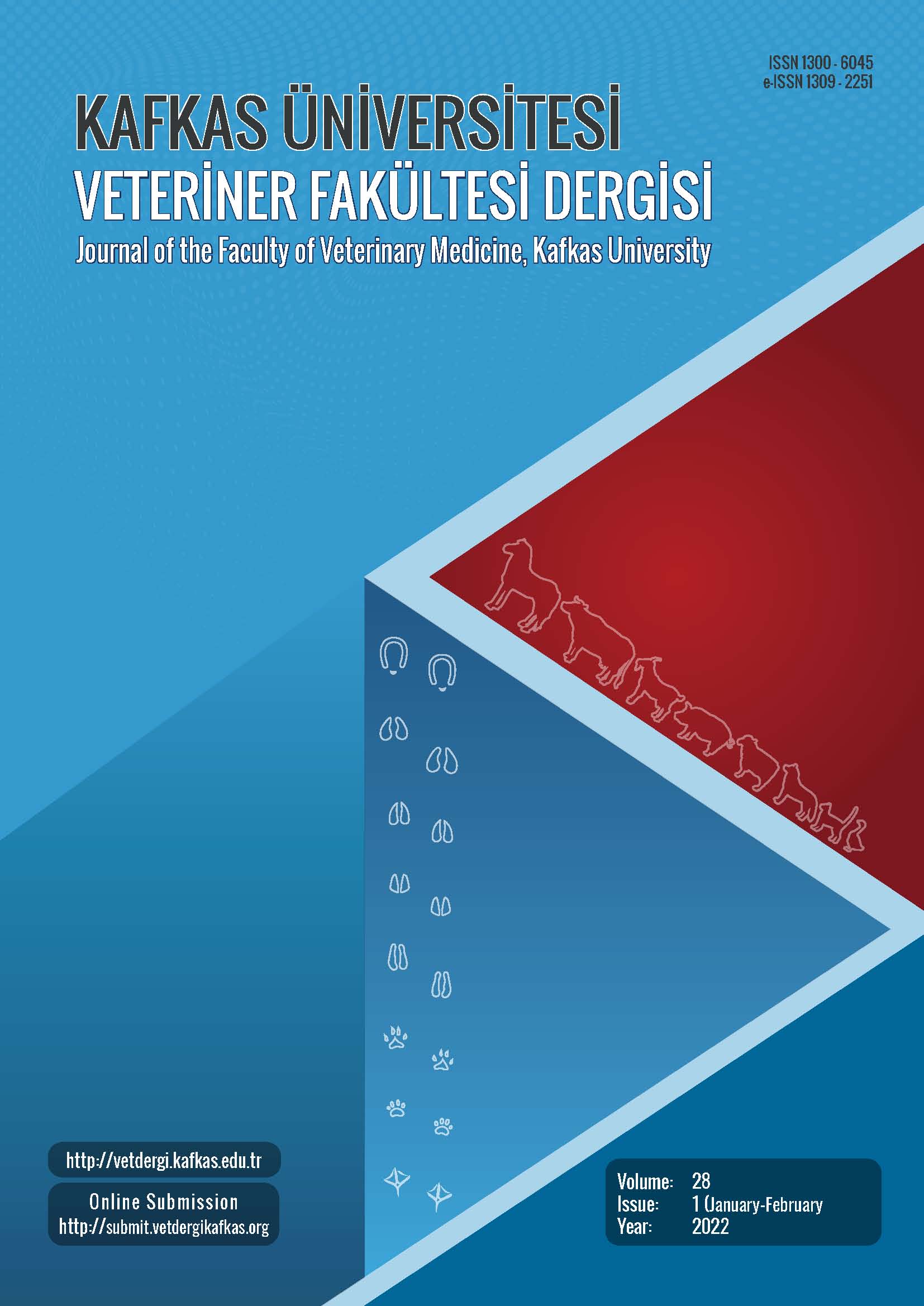
This journal is licensed under a Creative Commons Attribution-NonCommercial 4.0 International License
Kafkas Üniversitesi Veteriner Fakültesi Dergisi
2022 , Vol 28 , Issue 1
Histopathology and Tumor Necrosis Factor-α Expression in The Kidney of an Asphyxial Cardiac Arrest Rat Model
1Jeonbuk National University, Department of Veterinary Medicine and Bio-safety Research Institute, Iksan, Jeollabuk-do 54596, Republic of Korea2Research Institute Clinical Medicine of Jeonbuk National University-Biomedical Research Institute of Jeonbuk National University Hospital, Anesthesiology and Pain Medicine, Jeonju, Jeollabuk-do 54907, Republic of Korea
3Wonkwang University College of Medicine, Department of Internal Medicine, Iksan, Jeollabuk-do, 54538, Republic of Korea
4Wonkwang University College of Medicine, Department of Emergency Medicine, Iksan, Jeollabuk-do, 54538, Republic of Korea
5Research Institute of Clinical Medicine of Jeonbuk National University Hospital, Department of Emergency Medicine, Jeonju, Jeollabuk-do 54907, Republic of Korea DOI : 10.9775/kvfd.2021.26413 Multiple organ injuries in patients with post cardiac arrest syndrome (PCAS) after cardiac arrest (CA) is associated with mortality. Among multiple organ injuries after return of spontaneous circulation (ROSC), renal dysfunction can lead to acute kidney injury, which is known to be associated with high mortality. This renal injury is associated with a systemic infl ammatory response syndrome mediated by ischemia reperfusion by ROSC following CA. However, the mechanism remains unclear. Therefore, the objective of this study was to determine, the relationship between the expression of tumor necrosis factor-α (TNF-α), a pro-infl ammatory cytokine, and renal injury in PCAS. In the present study, asphyxial CA was induced in Sprague-Dawley rats with normothermia and the survival rate was measured at two days after ROSC. The rats in each group (n=6) were sacrificed at 6 h, 12 h, 1 day, and 2 days after ROSC. Renal injury was analyzed with by Masson"s trichrome stain, TNF-α immunohistochemistry (IHC) and western blot. The mortality was 72% at 12 h after ROSC and the survival rate of rats was decreased to 24% 2 days after ROSC. Histopathological score in the renal tissue after CA showed a significant increase at 6 h than sham group. The expression level of TNF-α in the renal cortex tissue was also increased at 6 h after CA based on both IHC and western blot results. After CA, the renal histopathological injury was significantly increased at 6 h after ROSC with a proportional increase of TNF-α expression in the kidney tissue leading to rapid injury to the kidney. Keywords : Post cardiac arrest syndrome, Asphyxial cardiac arrest, kidney, Histopathology, TNF-α










